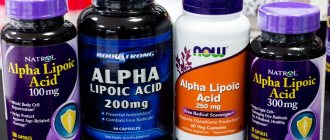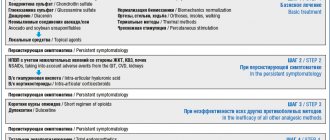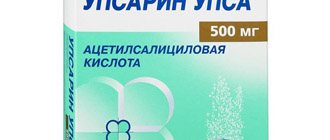Vitamin N (lipoic or thioctic acid) is a vitamin-like substance that has powerful antioxidant properties, is present in all cells of the human body, and is responsible for preserving youth.
This powder is yellowish in color, bitter in taste and with a specific odor; its appearance resembles hundreds of others known to chemistry. Meanwhile, possessing unique properties, he managed to win the respect of not only scientists and doctors, but also everyone who cares about their own health. For whom it is important to please the body with energy, protect brain cells and activate their work, speed up metabolism and maintain youth longer. So what is this special substance that can perform such miracles?
Unique "undervitamin"
It is known to the world under many names. The most common is lipoic acid. Analogue names: thioctic acid (international name), thioctacid, lipoate, berlithion, lipamide, para-aminobenzoic, alpha-lipoic acid, vitamin N. Regarding the last name, thioctacid is not a “full-fledged” vitamin, but rather a vitamin-like substance with similar properties B vitamins. Lipoic acid cannot be classified as a true vitamin precisely because of its unique abilities. Last but not least, due to its ability to be synthesized by the body itself (in the intestines).
Content:
- Unique "undervitamin"
- The more carbohydrates, the less vitamin N
- Useful acid
- Why does vitamin N deficiency occur and why is it dangerous?
- How to understand that there are already too many vitamins
- "Acid" dosages
- Food Sources of Vitamin N
- How to preserve maximum nutrition in food
- Interaction with other substances: benefits and harms
- Vitamin for sports
- The main defender of the liver...
- Vitamin for obesity
- How to lose weight with lipoic acid
- For pregnant
- Use in cosmetology
- The Latest Discovery About Vitamin N
On the other hand, while the “colleagues” of vitamin N are divided into separate groups - fat- and water-soluble, for lipoic acid there is no fundamental difference where to manifest itself: in fat, alcohol or water (acid salts react more quickly).
This natural antioxidant with universal properties is able to “make its way” into any cells of the human body, including the brain and blood vessels, and only there to fight the main pests - free radicals. Multiple experiments have proven the ability of thioctacid to protect DNA from damage. But it is precisely the violation of the structure of deoxyribonucleic acid that is called the main cause of aging of the body and the cessation of its viability.
Scientific experiments involving lipoic acid are ongoing. It is possible that the world is on the verge of the main discovery of all times - the elixir of eternal youth.
The unusual formula of vitamin N - a combination of fatty acid and sulfur - is capable of other “miracles”. Being an important element in the process of glycolysis, it converts sugar into energy. By enhancing the work of mitochondria, which play the role of “energy depots” in each cell, it affects the efficiency of the body, providing it with continuous sources of energy. And these mini-energy factories process “recyclables” - the breakdown products of amino acids, thus squeezing out the maximum benefit for the body.
It took scientists only a few years after the discovery of alpha-lipoic acid to learn how to synthesize the substance in the laboratory and determine that its structure is 1,2-dithiolane-3-valeric acid. The materials for the synthesis were beef liver and yeast. At the beginning of research, the substance was perceived as a hepatoprotector for the liver. But in the process of research, biochemists made a discovery: the entire human body is filled with substance N, it is in every cell. Then another equally important discovery: this powerful antioxidant performs the functions of insulin, lowering blood sugar levels. This made it possible to talk about lipoic acid as an effective medicine for diabetes.
In modern laboratories, two types of lipoic acid are “born”. Biochemists call them mirror isomers: R - right, S - left. The difference between the molecular compositions of both options is small, however, the human body agrees to fully accept only the R-sentence. But the synthesis of pure R-isomer is a rather expensive undertaking, so most pharmaceutical preparations with thioctic acid are a combination of left and right isomers in equal parts.
Biological role of lipoic acid
Vitamin N plays a truly important role in ensuring the vital functions of the body. In particular, this connection:
- is a powerful antioxidant, helps prevent the development of cancer, slows down the growth of tumor tumors;
- prevents the occurrence of malfunctions in the liver, protects its tissues from damage, and prevents the occurrence of fatty hepatosis;
- activates the processes of providing brain tissue with oxygen;
- regulates protein, lipid and carbohydrate metabolism;
- takes part in the processes of glucose breakdown;
- reduces the concentration of sugars in the blood;
- accelerates the separation of bile, thereby facilitating its effective removal;
- prevents the development of disorders in the central nervous system;
- protects vascular walls from damage, avoids the development of cardiac diseases;
strengthens the immune system;- prevents the development of disturbances in the functioning of the visual apparatus;
- is an excellent antispasmodic;
- increases the antioxidant properties of other substances (vitamin E, ascorbic acid, etc.);
- reduces the risk of strokes;
- effectively reduces the concentration of cholesterol in the blood;
- helps fight the manifestations of Alzheimer's disease;
- recognized as one of the insulin substitutes;
- present in the composition of individual enzymes;
- prevents the development of gallstone disease;
- slows down the formation of atherosclerotic plaques in the lumens of blood vessels;
- effectively removes toxins and heavy metals from the body;
- reduces the harmful effects of chemotherapy on organs and tissues;
- increases physical endurance;
- slows down processes associated with tissue aging;
- reduces the negative effects of stress.
In addition, lipoic acid significantly improves concentration, the ability to remember information, increases performance and helps get rid of the manifestations of chronic fatigue syndrome.
The more carbohydrates, the less vitamin N
Vitamin N reserves in the human body are replenished in several ways:
- in the process of synthesis;
- with food consumed;
- from dietary supplements.
Humans, like most living organisms, are capable of independently producing lipoic acid. The synthesis process occurs directly in the intestine with the participation of bile. True, the dose produced in this way is often not enough for the full operation of all systems, and with age this productivity fades away.
The second source of thioctacid is food. But the rule that works with other vitamins does not apply in the case of substance N again. Even a proper and balanced diet with foods rich in lipoid acid will not reveal the full potential of the substance. This paradox was explained by nutritional scientists: enzymes in the human body cannot fully break down alpha-lipoic acid to a state in which it is absorbed. So it turns out that once it enters the digestive system, a small part of the vitamin is absorbed, forming its own “depots” in the kidneys, liver and heart. The remains are excreted in the urine.
Carbohydrates can weaken the absorption of lipoic acid. There is a certain relationship between the two components: the richer the diet in carbohydrates, the less vitamin N the body absorbs.
This statement by scientists prompts another thought: how did people manage to live then until they learned to synthesize the substance in laboratories, and how those who do not take pharmaceutical forms of thioctacid continue to live today. There is no mystery in the explanation. A long and happy life without lipoic acid “shines” for absolutely healthy organisms, without metabolic problems, who do not suffer from diabetes and who have not accumulated free radicals. Today such conditions sound like fantasy. Bad habits, unhealthy lifestyle and poor environment have a detrimental effect on a person. And if a hundred years ago humanity could easily do without pharmaceutical analogues of vitamin N and live to a ripe old age in an active state, now not everyone can do this. And oncological diseases reaching epidemic levels and early decline of the body are, sadly, a normal situation for modern people.
Useful acid
And although thioctic acid is not considered an essential substance for the body in the scientific community, its role for humans is sometimes truly irreplaceable.
- Antioxidant. In its antioxidant properties, lipoic acid is not inferior to the more well-known ascorbic acid and vitamin E. Moreover, in combination with other antioxidants, it enhances their active capabilities.
- Effect on blood vessels. Vitamin N strengthens the walls of blood vessels, protects against damage, the influence of harmful substances and prevents the formation of blood clots. It has a certain effect in the treatment of multiple sclerosis, varicose veins, thrombophlebitis.
- Enzymatic activity. Lipoic acid plays the role of an enzyme that accelerates the absorption of glucose by cells. By influencing the activity of mitochondria, it controls the process of lipid metabolism. The combination of insulin, adrenaline and thioctacid promotes more active energy production.
- Body cleanser. The chemical formula of lipoic acid allows it to bind and remove salts of heavy metals such as mercury, arsenic, and lead from the body. Thus, it promotes rapid detoxification after poisoning.
- Liver protector. The hepatotropic abilities of vitamin N protect liver cells from the harmful effects of poisons and prevent tissue degeneration in cirrhosis and hepatitis.
- For the nervous system. Effective in use for Alzheimer's disease and alcoholic polyneuropathy. Alcohol causes damage to nerve cells in the brain and spinal cord, causing pathological conditions in people who abuse alcohol. Vitamin N regenerates damaged areas of nerve tissue.
- Ophthalmology. The beneficial effect of lipoic acid on eye cells and the ability to sharpen vision are the reasons for the use of the substance for the treatment of ophthalmic diseases.
- Leather. Vitamin N is effective for skin problems. In combination with other substances, it relieves acne and teenage acne.
- Immunity. Being an antioxidant, it creates a protective environment for the body against viral and infectious diseases. Effective in the treatment and prevention of ARVI.
In addition, it is worth remembering thioctic acid if you need to reduce cholesterol or sugar levels.
The feeling of fatigue and drowsiness does not leave you, spend little time in the fresh air - the brain is definitely experiencing a lack of oxygen. It is also possible to correct the situation and enhance mental activity with the help of products or pharmaceutical preparations containing vitamin N.
Other properties of alpha lipoic acid:
- improves thyroid function;
- protects against harmful ultraviolet radiation;
- serves as a growth factor;
- has an antispasmodic effect;
- choleretic substance;
- prevents the growth of fatty tissues;
- reduces appetite;
- restores the heart muscle.
Thioctic acid is also used:
- when you need to remove dark circles and puffiness under the eyes;
- to tighten pores and get rid of dull or yellowish skin;
- to reduce acne scars;
- for eczema, psoriasis, dermatoses;
- to smooth out small wrinkles;
- to get rid of chronic fatigue, increase attention and improve memory;
- for pathologies of the cardiovascular system;
- for type 2 diabetes;
- for the treatment of muscle degeneration;
- for the prevention and treatment of viral infections.
Functions of vitamin N (lipoic and thioctic acid)
The following are considered beneficial properties of vitamin N:
- Protects liver cells from toxic substances (including alcohol, lead) and other adverse factors;
- Participates in the regulation of the metabolism of lipids, carbohydrates, proteins and other substances, the formation of coenzyme A;
- Reduces blood sugar and cholesterol levels;
- Helps supply cells with energy and oxygen;
- Stimulates brain function, improves memory and concentration;
- Supports the proper functioning of the thyroid gland and visual organs;
- Participates in human growth and normal development;
- Has antioxidant properties;
- Immunomodulatory, anti-inflammatory, antispasmodic, radioprotective, choleretic properties;
- Strengthens the nervous system;
- Prevents the oxidation of vitamin C (ascorbic acid) and E (tocopherol), ubiquinone and glutathione, while increasing the effectiveness of these substances in the body;
- As a dietary supplement, it increases muscle mass and increases the body's endurance to physical activity;
- By reducing the level of free fats in the blood, it promotes weight loss, but no more than in a natural way, so you cannot lose weight quickly by taking additional alpha-lipoic acid;
- Prevents diseases of the cardiovascular, digestive and other systems - atherosclerosis, varicose veins, thrombosis, arterial hypertension, coronary heart disease, heart attack, stroke, diabetes, cirrhosis of the liver, hyperthyroidism, goiter, glaucoma, chronic fatigue syndrome.
- According to unconfirmed data, lipoic acid prevents the formation and development of cancer cells in the body.
Why does vitamin N deficiency occur and why is it dangerous?
A lack of any of the microelements needed by the body is a problem, and a complex one. Also, vitamin N deficiency is just the tip of the iceberg; the essence of the problem lies much deeper and can have serious consequences.
Vitamin N deficiency is caused by:
- unbalanced diet;
- deficiency of vitamin B1 and proteins;
- liver diseases;
- dermatitis.
In the case of hypovitaminosis N, it is impossible to name a point-by-point list of possible symptoms that should signal a deficiency of the substance. Meanwhile, a long-term lack of vitamin gives rise to serious health problems.
First of all, the nervous system suffers. Convulsions, dizziness, and polyneuritis appear. And all because instead of thioctic acid, pyruvic acid accumulates in the body, and it destroys nerve cells.
Another consequence is liver dysfunction. The next stage of the disease is hepatitis and pathological degeneration of healthy organ cells into adipose tissue, the formation of bile occurs with disruptions.
Lipoic acid deficiency also affects blood vessels. And you will have to pay for an unbalanced diet with the development of atherosclerosis.
Having analyzed the possible consequences of hypovitaminosis N, it is not difficult to compile a list of possible signals. But the presence of these symptoms no longer just warns of a slight decrease in the level of alpha-lipoic acid in the body, but signals serious consequences.
Contact your doctor immediately if:
- muscle cramps recur regularly;
- dizziness appeared;
- discomfort is felt in the liver area;
- a coating appeared on the tongue;
- there is an unpleasant odor from the mouth;
- dark spots appeared on the body, a foul smell of sweat appeared;
- There are brown circles under the eyes.
Any of the above symptoms is a signal of alarm.
What is vitamin N?
Vitamin N (lipoic acid, alpha lipoic acid, thioctic acid) is a vitamin-like fat-soluble substance that plays an important role in maintaining liver health and oxygen metabolism. According to their biochemical properties, lipoic and thioctic acids are close to B vitamins.
Thioctic acid (alpha lipoic acid) is an endogenous antioxidant produced by the oxidative decarboxylation of alpha-keto acids. In addition to protecting liver cells (hepatocytes), it helps reduce glucose and “bad cholesterol” levels in the blood, overcome insulin resistance, increase the amount of glycogen in the liver, and is involved in the regulation of carbohydrate and lipid metabolism.
Lipoic acid was first discovered in 1948, but only a few years later, in 1953, it began to be actively synthesized.
Thioctic acid is a crystalline powder with a bitter taste, light yellow in color, practically insoluble in water (except sodium salt), but soluble in ethanol, decomposes under the influence of high temperature and sunlight.
The systematic name for lipoic acid is lipoic acid, 5-[(3R)-dithiolan-3-yl]pentanoic acid. The empirical formula of thioctic acid is C8H14O2S2. Trade names: Lipoate, Thioctacid. ATX: A16AX01. ICD-10: B15, G62.1, G63.2, I25.1, I70, K73, K74, K76.0, T56.
How to understand that there are already too many vitamins
It is not clear by whom and when the invented principle “The more, the better” has found its application in few places. In most cases, it only serves as an example of bad manners and bad taste. And in the story with vitamins, it can even put you on a hospital bed.
Meanwhile, it is worth understanding: vitamin N obtained from food can never provoke an overdose of the substance in the human body.
The only cause of hypervitaminosis is the synthetic form of thioctic acid, taken in a dosage significantly higher than the daily norm.
It is a little easier to determine an overdose of lipoic acid than its lack in the body. Symptoms traditional for hypervitaminosis:
- increased stomach acidity;
- heartburn;
- pain in the pit of the stomach;
- diarrhea;
- skin allergies: urticaria, itching, inflammation.
In most cases, getting rid of unpleasant symptoms is easy: just give up the synthetic vitamin. But it’s even better to forget about the practice of arbitrarily prescribing medications or vitamins for yourself, and then also about. There are doctors for these purposes. Only they, after carefully studying various blood tests and other examinations, are able to prescribe an adequate dose of deficient minerals and vitamins.
Overdose (hypervitaminosis) of the medicinal form of lipoic acid
An overdose of chemical analogues of thioctic and lipoic acids can lead to symptoms such as:
- Generalized seizures;
- Blood clotting disorders;
- Heartburn, nausea;
- Allergic reactions;
- Acid imbalance (high acidity) with lactic acidosis;
- Hypoglycemic coma.
If the above symptoms appear, induce vomiting, rinse the stomach, take a sorbent (“Activated carbon”, “Enterosgel”). If necessary, consult your doctor.
When you take vitamin N from natural sources, it is excreted from the body without side effects.
"Acid" dosages
As is the case with some other beneficial substances, scientific minds cannot agree on what the daily dose of lipoic acid should be.
Therefore, the concept of “norm” was pushed into the framework between half a milligram and 30 mg. In some cases, the upper bar is raised to 50-80 mg, and in exceptional cases – to 800 mg/day. However, the most common recommended dose for adults is 25-50 mg daily. Comparative table of consumption rates
| For whom | Daily norm |
| Children 1-7 years old | 1-13 mg |
| Children 7-16 years old | 13-25 mg |
| Adults | 25-30 mg |
| Pregnant and nursing mothers | 45-70 mg |
This norm “works” for healthy people leading a normal lifestyle. In other cases, the dosage is adjusted according to the body's requirements. Increased daily norms cannot be taken for longer than the recommended period - the body is able to “get hooked” on artificial “feeding” and eventually abandon its own production of the substance. Also, you should not buy vitamin N for children unless necessary, especially for infants. Babies will receive everything they need from their mother’s milk, while older ones will receive everything they need from their daily food.
A higher daily dose of lipoic acid is needed:
- people who play sports professionally (their norm reaches 100-200 mg of thioctacid);
- whose work involves contact with poisons and radioactive substances;
- pregnant women and women during lactation (but only under the supervision of a doctor);
- after severe nervous disorders, stress;
- when consuming large amounts of proteins;
- spending a lot of time in cold rooms or outside in winter;
- diabetics (consume 400 mg of alpha lipoic acid per day);
- those engaged in active mental work or for the prevention of neurodegenerative disorders (up to 600 mg);
- for obesity (maximum dose 1800 mg/day).
When determining your own daily intake of lipoic acid, you need to remember that there are two isomers of thioctacid - right and left. The dosage indicated above is based on preparations containing equally two versions of laboratory acid. The dose of drugs containing exclusively the R-isomer is automatically divided into 2.
And further. In any case, the parallel use of lipoic acid and alcohol is strictly prohibited.
The interval between eating and taking the drug is at least an hour. For medicinal purposes, the course of treatment is at least 8 weeks. There is no need to “prescribe” yourself a vitamin for prevention, for heart disease, fractures, colds or other health problems without consulting a doctor.
Daily requirement of vitamin N
The daily requirement for alpha lipoic acid is:
- Adults in normal condition - 25-50 mg;
- Children - 12.5-25 mg;
- Pregnancy and lactation (with caution and after consultation with a doctor) - up to 75 mg.
- For various diseases, the therapeutic dose is increased to 75-1200 mg/day, depending on the disease and duration.
The daily dose increases in the case of:
- Constant fatigue, heavy physical and mental work, poor concentration;
- Various diseases - atherosclerosis, diabetes, HIV, Alzheimer's disease, hepatitis, liver cirrhosis, obesity;
- Food or alcohol poisoning.
Food Sources of Vitamin N
When asked what contains the most lipoic acid, jokers answer: in pharmacy vitamins. This is actually true. But you can’t eat the “feed” of the pharmaceutical industry all your life. After all, Mother Nature also takes care of her children and has hidden some reserves of vitamin N in delicacies of animal and plant origin. So, it’s time to find out which foods contain thioctic acid, especially since a healthy body is able to provide itself with the daily requirement of the substance from food.
Leading foods containing the most vitamin N:
- offal (heart, kidneys, liver);
- red meat (beef, lamb, turkey);
- dairy products (milk, sour cream, cream, cottage cheese, kefir);
- eggs;
- yeast;
- mushrooms;
- leafy vegetables (spinach, cabbage);
- legumes;
- rice;
- Wheat groats;
- fruits.
Interaction with other substances: benefits and harms
Do you think it’s only human nature to have friends and enemies? Vitamins also have a circle of “friends”, and they bring more benefits to the body, enhancing each other’s abilities. For lipoic acid, the list of “friends” and “enemies” looks like this:
- fat-like substances (with their help, the body absorbs vitamin N more easily);
- vitamins, F;
- vitamins and (thioctacid “protects” and enhances their effect in the fight against free radicals);
- B vitamins (strengthen the effectiveness of thioctic acid);
- alcohol and fatty foods weaken the effect of vitamin N.
Interaction with other drugs:
- antibiotics and sugar-containing medications “disarm” vitamin N;
- drugs for the treatment of cancer partially neutralize lipoic acid;
- insulin and antidiabetic drugs reduce the effect of thioctacid on the body.
Some diseases, such as those of the gastrointestinal tract, have a negative effect on the absorption or synthesis of vitamin N.
Properties
This vitamin is actively involved in the processes of vital biological oxidation, saturating the body with quality energy, as well as the absorption of carbohydrates and proteins. Lipoic acid is generously endowed with the properties of B vitamins:
- works well in breaking down glucose;
- actively supplies the cells of the brain and motor system with the necessary oxygen;
- perfectly regulates (and adjusts) metabolic processes;
- gently removes bile and accumulated toxins from the body;
- actively helps reduce cholesterol levels.
Vitamin for sports
It is generally accepted that women are more interested in the benefits of vitamins and minerals. They, beauties and caring mothers, are destined by their “status” to be aware of everything that has a positive effect on the beauty and health of the family. This is only a half-truth. Information about the benefits of vitamins and microelements is just as important for men, especially those who see themselves in sports and, in particular, in bodybuilding. For them, who regularly lose energy in the gym, it is especially important to know what microelements and how to take them to gain muscle mass.
Athletes know that vitamin N is the “king” among useful substances. Under its influence, fat melts before our eyes, and muscles gain mass day after day. And at the same time - no feeling of fatigue or weakness.
The rate of lipoic acid intake for athletes may vary depending on the load and type of training.
Speed-strength exercises require 100-200 mg of vitamin N per day. During competitions – 150-250 mg daily. Endurance training includes a vitamin menu of 400-500 mg, during competitions - 450-600 mg/day.
In some cases, the intake of lipoic acid is determined by a specially designed program. In this case, at the initial stage, you should drink vitamin N in doses not exceeding 100-200 mg/day, eventually increasing to 400-600 mg per day. The daily portion should be divided into equal shares and drunk three times a day. But sports nutritionists do not recommend going beyond the 600-milligram maximum. This is the upper limit of the vitamin portion for athletes. Increasing this dose will not have any effect on either fat burning or muscle building.
Sometimes the question arises as to what can replace vitamin N in a sports diet. Conjugated linoleic acid is similar in the principles of its effect on the body of athletes. It, being nothing more than a partially modified form of lipoic acid, also regulates the ratio of fat and muscle tissue, reducing sebaceous deposits on the abdomen and enhancing muscle growth.
The main defender of the liver...
The relationship between liver health and lipoic acid is so close that sometimes it is even difficult to understand what cannot exist without what. On the one hand, problems with the liver are a signal that the body has stopped producing vitamin N. On the other hand, most diseases of this organ are treated with drugs that contain thioctacid.
The definition of “liver disease” refers to many diseases - from hepatitis to cirrhosis. The consequences of most of them are very sad, especially if you do not follow the treatment program. The liver is the main “filter” of the human body, which also requires regular cleansing. In such cases, lipoic acid takes on the role of a cleaner.
Scientists discovered the positive effect of α-lipoic acid on liver cells back in the last century. The substance not only creates reliable protection for the gland, but also restores damaged areas of the organ and prevents pathological degeneration. Thanks to lipoic acid, glutathione (a specific antioxidant synthesized in the liver) is consumed to a lesser extent, which has a beneficial effect on it, damaged by hepatitis or cirrhosis. Thioctacid is an effective drug for the treatment of hepatitis C and B; it is increasingly used in traditional therapy. It has also proven itself positively in the treatment program for gallstones.
Typically, the daily requirement for vitamin N in people with liver disease is 75 mg. The dose is regulated by the attending physician. As experiments show, a month's course of treatment with α-lipoic acid is enough for the first positive changes in the structure of the liver to become noticeable in patients with hepatitis or diagnosed with alcoholic fatty liver degeneration. The risk of developing malignant cells in the gland is reduced, fat metabolism in the tissue is stabilized.
...And diabetics
Diabetes is not so terrible as its consequences, in particular diseases that develop against the background of the “sweet disease”. One such complication is diabetic polyneuropathy, which affects nerve endings throughout the body.
Medicine calls alpha-lipoic acid a powerful tool in the treatment of disease. Through experiments it was established: 600 mg of the drug, taken intravenously and in the form of tablets/capsules, can affect the rate of development of the disease and reduce clinical manifestations.
At the initial stage of treatment, many are interested in how long it takes for IV therapy. The course of rehabilitation for each patient is determined individually. For some, 3-week injections are enough; in other cases, treatment lasts up to 6 months. A program of 15 droppers of alpha-lipoic acid solution is considered optimal. Then, over the next month or two, the patient takes 600 mg of berlition daily.
Lipoic acid dosages
The dosage form of vitamin H “Thioctacid” is administered intravenously (iv - stream, drip), intramuscularly (im) or orally.
Severe forms of polyneuropathy - intravenously (no more than 50 mg/min) 600 mg or intravenously, in a 0.9% NaCl solution, 1 time per day for 2-4 weeks. In severe forms, the dose is increased to 1200 mg. The intramuscular (IM) dose (injection) in one place should not exceed 50 mg. Further treatment is accompanied by oral administration of the drug for 3 months.
Important: Remember that Thioctacid is a drug and should be taken only after consulting a doctor.
Vitamin for obesity
Just a few decades ago, it never occurred to anyone that excess weight, along with cardiovascular diseases, would soon be named one of the main problems of the century. “Getting rid of excess is easy! To lose weight, you need to reduce the portions you consume per day!” – skinny people who have no idea about the causes of obesity never tire of giving advice. An overweight person is not always a glutton. Stress, poor environment, irregular nutrition (often due to a specific work schedule), “sedentary” work, heredity - these are not all the reasons for possible excess weight gain caused by metabolic disorders. And the metabolism, as luck would have it, if it is disrupted, is often in the direction of slowing down. So we get a paradox with a “glass of water”, which turns into fat deposits on the sides.
And the pharmaceutical industry never tires of replenishing the arsenal of pharmacies with weight loss products. And the plump people are buying everything at breakneck speed, so as not to accidentally miss a miracle pill that can get rid of fat in a month/week/day. But, as in the old joke, we have two news for you: good and bad. The bad thing is that miracles don’t exist and you can’t lose weight in a day. And now - a good one: a pill for excess weight was invented a long time ago. It modestly lies on the shelves of all pharmacies in the world with a price tag of a penny. It is also called modestly - lipoic acid, or vitamin N, or has some other trade name, but in parentheses the name common to all countries is always indicated - thioctic acid.
The unique properties of this substance help regulate fat and carbohydrate metabolism in the body, reduce cholesterol and blood glucose levels, and improve liver function.
But how do these beneficial properties affect the process of weight loss? How to lose weight with lipoic acid and is it even possible?
Vitamin N is fundamentally different from all “diet pills.” Most anti-obesity drugs, weight loss programs and diets are aimed at active fat burning, which subsequently has an even worse effect on the already disrupted metabolic process. Lipoic acid has a different tactic: it does not burn fat, but converts it into energy, which, from the point of view of nature, is more correct and beneficial for the body, and has a better result.
How vitamin N is useful for losing weight:
- reduces weight without fasting;
- normalizes rather than changes metabolism;
- improves the functioning of the gastrointestinal tract;
- prevents the development of gallstone disease;
- strengthens blood vessels and heart muscle;
- has a positive effect on vision;
- eliminates stretch marks.
What foods contain alpha lipoic acid?
The main sources of lipoic acid are animal products - heart, kidneys and liver. It is also found in large quantities in various legumes: lentils, peas, beans. Small amounts of acid can be obtained from bananas, mushrooms, yeast, rice, spinach, cabbage and dairy products.
What foods contain alpha lipoic acid?
The human body is capable of producing lipoic acid on its own. But even taking into account the amount that can be obtained from food, the level of its content will be insufficient for the healthy functioning of the body. Therefore, doctors advise paying attention to additional intake of alpha lipoic acid in the form of a supplement. It is available in capsule form.
Alpha lipolic acid (ALA) is a compound produced to a small extent by the body. Most of it is found in spinach, broccoli and giblets . ALA has strong antioxidant and anti-inflammatory properties. In addition, it is a coenzyme required during numerous metabolic reactions. Alpha lipoic acid also affects insulin-dependent processes, increasing the sensitivity of cells to insulin. ALA also improves the conversion of glucose into glycogen and has a positive effect on the regulation of blood glucose levels.
Alpha lipoic acid is found in a wide variety of foods. A table with foods containing vitamin N will help you navigate and create a competent menu. Find out more in the article.
Lipolyveic acid is found in the following types of foods:
- veal;
- beef without fat;
- cabbage;
- broccoli or spinach with celery;
- boiled rice;
- yeast (brewer's);
- pepper (not bitter).
- milk
- eggs
- vegetable
It is the intake of these products that will help maintain the level of vitamin composition in the body, which will maintain the metabolic rate without slowing down. To replenish its reserves in the body, it is worth including these products in your diet. But not all of them can be consumed on a diet. Therefore, the diet and intake characteristics should be agreed with your doctor.
Initially, it was believed that alpha lipoic acid was a vitamin and should be taken into the human body through food. However, research has shown that animals and plants and - in smaller quantities - humans have the ability to produce this substance. ALA also affects many other processes in the body, such as liver regeneration or muscle glycogen production, which is why it is used in sports.
Alpha Lipoic Acid (ALA) is a versatile supplement with few side effects. It performs two important functions in our body: firstly, it is an excellent antioxidant, that is, a substance that neutralizes combined radicals throughout the body, both in water and in fat, as well as inside and outside cells.
The second important role that alpha lipoic acid plays is metabolism - converting food into energy. The amount of alpha lipoic acid produced by our body and consumed through food is sufficient for metabolic processes, but supplements are required to release the antioxidant effects of alpha lipoic acid.
Most often, supplements containing synthesized lipoic acid are prescribed for weight loss. The secret is that the natural substance helps reduce the stress that inevitably occurs during a diet. ALA saves the brain from damage that can occur during the process of losing weight, and also provides the body with the necessary energy.
Alpha lipoic acid has general strengthening and anti-aging properties. A substance that under normal conditions is quite capable of being synthesized by the body on its own is valued by nutritionists and therapists for the following abilities:
- improving the body's absorption of insulin (increasing overall sensitivity to the hormone);
- decreased blood sugar levels;
- reducing fat accumulation in the liver;
- general loss of appetite.
Share what you see with your friends!
How to lose weight with lipoic acid
But still, lipoic acid is not a magic wand. The principle of its operation is explained by the rational laws of chemistry. And in order for the weight loss process to begin and continue without interruption, you should follow certain recommendations.
- A combination of vitamins and sports. No one has canceled moderate physical activity for those losing weight. Of course, it is possible without them. But! So we took a tablet of thioctacid and are waiting for it to work... But what exactly are we waiting for? Lipoic acid is already working - several fat cells have already been converted into energy and are looking for a way out. The only way to get rid of “bonus” strength is physical activity. On the other hand, dumbbells or running will protect against sagging on a thin body.
- Cut the calories a little... If you expect maximum results, then the effort should be maximum. During the fight against obesity, it is important to clear the refrigerator of “bad” carbohydrates.
- ...But no fasting. Losing weight with the help of lipoic acid is probably the only program in the world that not only does not prohibit you from eating when you want - it prohibits you from not eating. No low-fat protein diets or starvation menus of “grass and water”! Malnutrition combined with alpha lipoic acid causes side effects that are dangerous to your health!
Dosages
The process of losing weight for many over time turns into a game of chance. We lost the first kilogram, rejoiced and raised the bar to five. They dropped five - they wanted five more. Sometimes the struggle with excess weight turns into madness: even those who are already clearly underweight continue to lose weight. The outcome of such weight loss is usually disastrous.
Lipoic acid is not a drug that you can drink in large quantities uncontrollably. How much vitamin N tablets to take per day and for how long is determined by your doctor.
The instructions for use describe in detail all the indications and contraindications for taking lipoic acid. The method of using the drug for weight loss provides dosages from 25 to 400 milligrams per day, but, like any other medicine, it is taken under the constant supervision of a doctor. It is advisable to take vitamin N as a remedy for excess weight before breakfast, during dinner, or immediately after training.
Lipoic acid really works wonders in the fight against obesity. But she is not omnipotent either. You cannot achieve the desired result if you eat your vitamin with cakes and fried potatoes. Meanwhile, thioctacid is respected not only by doctors and nutritionists. In cosmetology, the beneficial properties of acid are also actively used in preparations for facial skin, hair, and nails.
Use of lipoic acid
Malfunctions of the nervous system due to alcohol intoxication, diabetes and other diseases;
- Removing toxic substances (toxins) from the body;
- Treatment of liver diseases (hepatitis, cirrhosis), diabetes mellitus, Alzheimer's disease, atherosclerosis, bronchial asthma, etc.;
- In the case of intense physical activity - sports, heavy physical or mental work;
- Prevention of cardiovascular diseases;
- Doctors do not recommend alpha lipoic acid for weight loss because taking high doses of the chemical version of vitamin N has a number of side effects, although the weight loss effect is negligible with exercise.
For pregnant
When planning pregnancy, it is important to replenish all vitamin depots of the body. After all, very soon a woman will have to “feed” not only herself, but also the child, whose health at first completely depends on the health of the mother. But the course of vitamin therapy should be determined by a doctor, especially since in gynecology the emphasis is on vitamins responsible for women’s health.
Only the attending doctor can adequately determine which vitamin and in what doses a woman needs for prevention or treatment, which form of the drug is best suited, and which microelements it is better to stay away from.
It is especially important not to engage in vitamin therapy without permission during pregnancy and breastfeeding. During this special period, many doctors generally prohibit their patients from taking dietary supplements and vitamin preparations. Meanwhile, laboratory studies have shown how lipoic acid (in adequate doses) is beneficial for pregnant women. Vitamin N reduces the risk of miscarriage and abnormal development of the nervous system of the unborn baby.
Benefits of thioctic acid for women's health:
- gives additional energy;
- important for kidneys and liver;
- prevents toxicosis;
- removes toxins from the body;
- controls blood glucose, cholesterol and lipid levels;
- creates a barrier to ultraviolet radiation;
- regulates the functioning of the thyroid gland.
How much lipoic acid does the body need?
Lipoic acid has a beneficial effect on the entire body, and its deficiency leads to the development of various pathologies. Therefore, for preventive purposes, according to many doctors, it is necessary to consume 10-50 mg of thioctacid per day.
The Russian Center for Epidemiology and Hygiene recommends taking 30 mg of a-lipoic acid per day. For cancer and disorders of the heart and blood vessels, the dosage of the substance increases from 100 to 300 mg.
It is noteworthy that products with a-lipoic acid cannot fully compensate for the deficiency of thioctacid. So, in order to saturate the body with a useful antioxidant in full, a person needs to eat up to 9.5 kg of spinach or 11.3 kg of beef kidneys per day.
Therefore, to obtain the recommended amount of lipoic acid per day, doctors recommend taking special dietary supplements containing a natural antioxidant.
Use in cosmetology
The skin on the face is the most delicate, but at the same time most often susceptible to the negative effects of the sun, wind, and frost. Therefore, more often than other areas, it requires careful care. And α-lipoic acid is best suited for facial skin as a “tasty” nourishment.
By the nature of its effect on the epidermis, thioctic acid is more reminiscent of vitamins A, E, C - it protects against free radicals and improves metabolism at the cellular level. But in addition to this, vitamin N effectively rejuvenates the skin, tightens it, and gets rid of wrinkles and acne. This vitamin of youth is found in all anti-aging creams (both the most expensive and very cheap). Lipoic acid is responsible for beautiful skin in the décolleté and neck area, making it soft, smooth and tender.
By regularly using thioctacid externally, you can forget about skin imperfections in the form of small acne scars or minor injuries, pustules and pimples.
Creams containing alpha-lipoic acid relieve swelling, inflammation, cracks, and protect collagen molecules from destruction.
Lipoic acid for cosmetic purposes can be used as a finished product or prepared independently by enriching a cream, tonic or lotion with vitamin N. The yellow powder is first dissolved in alcohol or oil and then added to the finished cosmetic product. If you don’t like this form of release, you can buy the vitamin in ampoules or capsules at the pharmacy and add it to cosmetics in this form.
How to properly dilute vitamin
- Skin cleansing oil. Add a few milliliters of alpha lipoic acid in liquid form or a few milligrams in powder. Stir.
- Serum for moisturizing. Vitamin saturation should not exceed 1 percent.
- Tonic. Dilute lipoic acid in alcohol, stir thoroughly and pour the mixture into tonic.
- Cream. Dilute the powder in an oil base (or add the vitamin in liquid form), mix with the cream.
Adviсe
- You cannot heat up the vitamin mixture and then cool it - it loses its beneficial properties.
- Store the finished fortified cosmetic product in a cool, dark place.
- If you feel a burning sensation after using the drug, reduce the percentage of vitamin saturation. Therefore, to begin with, fortify cosmetics with a small portion of lipoic acid.
- In case of contact with mucous membranes, rinse with plenty of water and consult a doctor.
Two beauty recipes
And now it’s time to find out how to prepare a delicious skin product at home, the effectiveness of which is no worse than expensive creams.
Remedy No. 1
You will need:
- alpha lipoic acid – 1 ml;
- ascorbic acid – 8 ml;
- 10 ml syringe;
- fragrant water;
- kudesan (coenzyme in water-soluble form).
Draw ascorbic acid and lipoic acid into the syringe. In a separate container, mix coenzyme and fragrant water. Soak a cotton pad with the prepared acid mixture and apply it to your facial skin. Wait until the vitamin mix is absorbed. Spray your face with a mixture of coenzyme and fragrant water. After 15-20 minutes, wipe the skin with any tonic.
The result is radiant, soft skin with a beautiful color.
Remedy No. 2
You will need:
- macadamia nut oil – 10 ml;
- lipoic acid – 2 ml;
- green tea or grape extract.
Dissolve lipoic acid in nut oil and mix thoroughly. Add a little vitamin-containing extract (optional). Apply the finished mixture onto the face with massage movements. Keep the oil mask on for 20 minutes. Blot your face with a paper towel to remove any remaining product.
Best materials of the month
- Coronaviruses: SARS-CoV-2 (COVID-19)
- Antibiotics for the prevention and treatment of COVID-19: how effective are they?
- The most common "office" diseases
- Does vodka kill coronavirus?
- How to stay alive on our roads?
The result is moisturized and vitamin-enriched facial skin.








